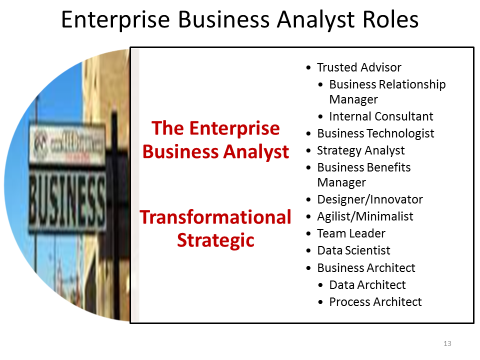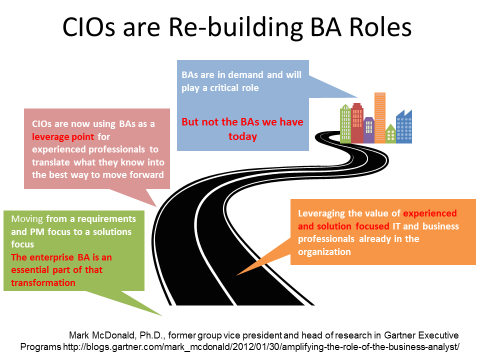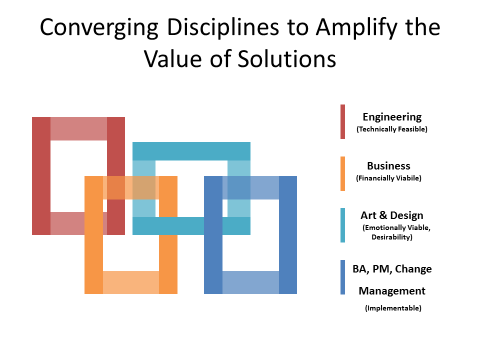Are You a Great Business Analyst? Here’s How to Tell!
I’m sure many of you think that you are a really great business analyst. You read BA Times, attend BA conferences and write great requirements. But how can you tell if you truly are a great BA?
Recent articles by Kupe Kupersmith and Brad Egeland have outlined many characteristics of a highly performing BA. I’d like to take a slightly different approach and provide you with some questions that you can ask yourself to help determine if you truly are a great BA.
Do you actually know who all of your customers are?
I define “customers” as anyone who utilizes your work to get their job done. Notice I said “work” and not “requirements.” A great BA delivers much more than a set of written requirements. If all you do is write requirements you can stop reading. You are not a great BA. If you are still with me, then take a minute to write down whom you think your customers are for the projects you are currently working on. I’ll wait…
Related Article: The Great Facilitator
Great BAs understand that they serve a diverse group of customers. If you wrote down developers, testers, business SMEs, project manager, product owner/product manager, internal customers who use or support the system, external customers who use and pay for the system and executive management then you are on your way to being a great BA! To succeed, you must consider everyone who will be impacted by the solution your team is working on. Forgetting or neglecting a customer will lead to missed expectations and significantly increase the risk of creating a solution that is not well accepted. Since the pressure to develop the solution is always high, it’s easy to focus heavily on writing perfectly detailed requirements for the developers and testers to understand.
Great BAs remember that we deliver more than just written requirements to developers and testers. We need to explain the business problem to be solved and the vision of the solution. We also need to understand the scope of the project and help the team limit scope creep.
BAs serve various customers whom all have different priorities and agendas within a project. Great BAs can identify each of these customers and understand their priorities. Developers and testers are most concerned with the details of the requirements. They need to know exactly what to develop and what to test which is why they tend to wordsmith the requirements. Product managers/owners are concerned that the end product satisfies the primary business needs of the paying customer. Project managers want to know how many more stories we have left to develop. When will we be done? Internal customers are concerned with how easy the solution will be to support. Executive management doesn’t care about the nitty gritty details of the requirements. They care about overall costs, timelines and whether the project will bring in new revenue or not. Of course, your external customers who pay for the solution want their problem solved.
Great BAs realize that they must do more than just write clear requirements for developers and testers. They must consistently communicate the vision, scope and reason why we are completing the project to everyone who has an interest in the solution.
Do you know exactly what problem you are solving for your customers?
The best solutions explicitly solve a well-defined problem. Ask yourself if all of your customers can describe the problem your team is trying to solve. If the answer is no, then you need to communicate the problem clearly to everyone.
Great BAs clearly define the business problem being solved and communicate it early and often. Everyone needs to be reminded why we are creating the solution. Software development takes time. During that time, it is very easy to forget why we are creating the solution in the first place. This leads to shortcuts, scope creep, and missed expectations. A great BA ensures this never happens. Make it a habit to start your meetings with a quick recap or reminder of the problem we have been tasked to solve.
Do you have empathy for your customers?
Do you really understand the pain they are experiencing due to the problem your team must solve?
Paying customers or people at the ground level who use or support your product every day typically are not consistently involved in a software development project. If a BA truly has empathy for the customers who will be using the completed solution, then the probability of success will skyrocket!
Great BAs take the time to observe and experience the pain of the problem that needs to be solved. Empathy allows a BA to focus on the customer experience within the solution. Deadlines, resource constraints, and scope considerations can contribute to shortcuts that negatively impact the customer experience. Having empathy gives the customers a voice in the development process via the BA.
Do people enjoy coming to your meetings? Are your meetings always fun and productive?
That’s right; I used the words ”fun” and “meeting” in the same sentence!
Great BAs always have an agenda and goals for a meeting clearly communicated.
Great BAs always prepare for their meetings by preparing visuals or determining what facilitation technique is appropriate. You should be using innovative facilitation techniques such as collaborative games to increase the interactivity within your meetings. Do all of your meetings consist of having people sit around a conference table while multitasking on their laptops? If so then they are not fully engaged and participating in your meeting. Don’t be afraid to get people out of their chairs to join you at the whiteboard for a collaborative session.
The BA is uniquely positioned to interact with every customer associated with a new solution. It is this unique position that allows a truly great BA to ensure the project is a smashing success. Great BAs communicate frequently to each role on the team and are able to remind everyone why we are completing the project in the first place.
Congratulations to those of you who can claim they affirmatively answer these questions for every project! You truly are a great BA!







